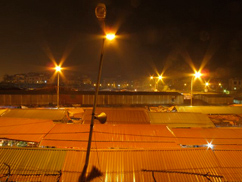
Intersection (2010) CD version 15:06
Intersection is entirely created using field recordings taken in November 2009 in and around the city of Hanoi in Vietnam. The field recordings were transferred to a laptop and layered, filtered, slowed down and processed in many ways to form the composition. The idea of using recordings of day by day sounds as material for musical expression is not new. It has been pioneered shortly after the advent of tape recorders in the late 1940 by the French composer Pierre Schaeffer and others. They coined the term 'musique concrete' for these kind of works.

However, the power of modern computers and advanced techniques for resynthesis of sonic material allows transformations that were quite hard to achieve or impossible in the last century: Thousands of extremely short particles of sound can be layered according to statistical distributions, the spectrum of a sound can be superimposed to another completely different sound and sonic events can be placed in entirely realistic sounding yet impossible to build spaces.
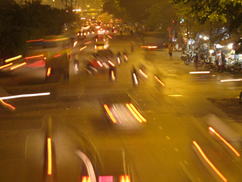
composition versus concert
Intersection manifests itself in two ways; as a CD version from Spring 2010 and as a live concert. The CD version is above. This version has been released on the documentation CD that has been created for the premiere of the concert in Hanoi. The source material for the music on the CD also works as a set of possible scenarios which forms the basis of the live performance. During the performance the material is recombined, processed and diffused over a multi channel sound system surrounding the listener. The concert version is a constantly gorwing and mutating entity. Each time I perform the piece I change the narration and add new material..
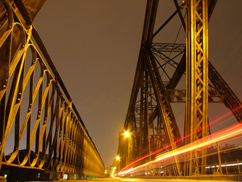
The raw sound sources are the ubiquitous motor cycles, the car horns, a recording of a fire on a field near Red River, rattling of rusty old metal joints of the Long Bien Bridge, the bells of the cathedral St. Joseph and several recordings from the main train station. The CD version of the piece starts with seemingly unprocessed yet massively layered street noises, building up and up and then suddenly a very prominent car horn is transformed into a giant brass instrument, opening a section where reality is step by step replaced by more abstract sounding events, a dramatic escape from the ongoing city noise, where the metallic rattle from the bridge morphs into sonic mist.
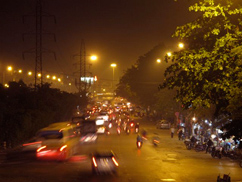
The middle section is dominated by granulated fire sounds and more musical themes which are played by instruments derived from the motor cycle horns. The dramatic fortissimo horn section shifts the meaning of the harmless fire recording into something much bigger, much more threatening, but at the same time elevates the listener, pulls them away from the scene before throwing them back in, with the start of the narrative loud speaker voice opening part three.
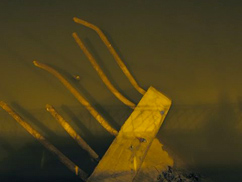
In the this last part, a sudden shift in perspective places the listener first in some very disjunct locations that have no real connection with each other; sounds of wrapping boxes with tape collected at the Dong Xuan market hall, the ongonig loudspeaker announcements and finally the sonic relocation to the train station which manifests itself further via the noises of a departing train. However, the surreal ambiguity of place and time is maintained by the introduction of a never stopping church bell from St. Joseph. The mechanical noises of the departing trains are finally shaped into a complex poly rhythmical entity that slowly fades away, leaving room for the long reverberation of the combined colours of sonic Hanoi.
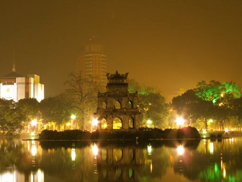
The premiere of the performance was on April 3th 2010 at the Museum of History in Hanoi / Vietnam.
This project has been made possible via the generous support of the Goethe Institute Hanoi and its director Peter Bumke.
Photos on this page taken March 29 2010 in Hanoi